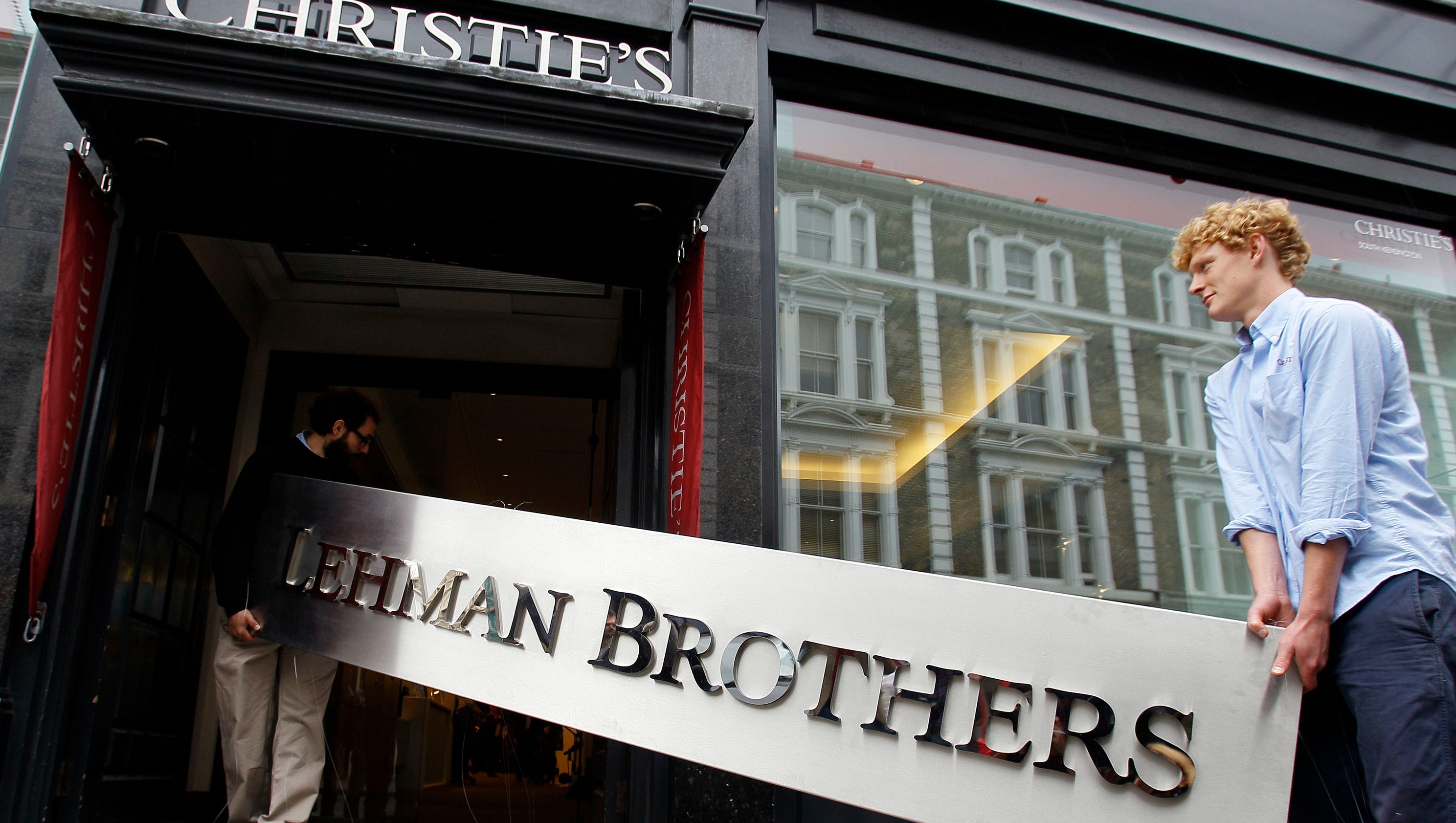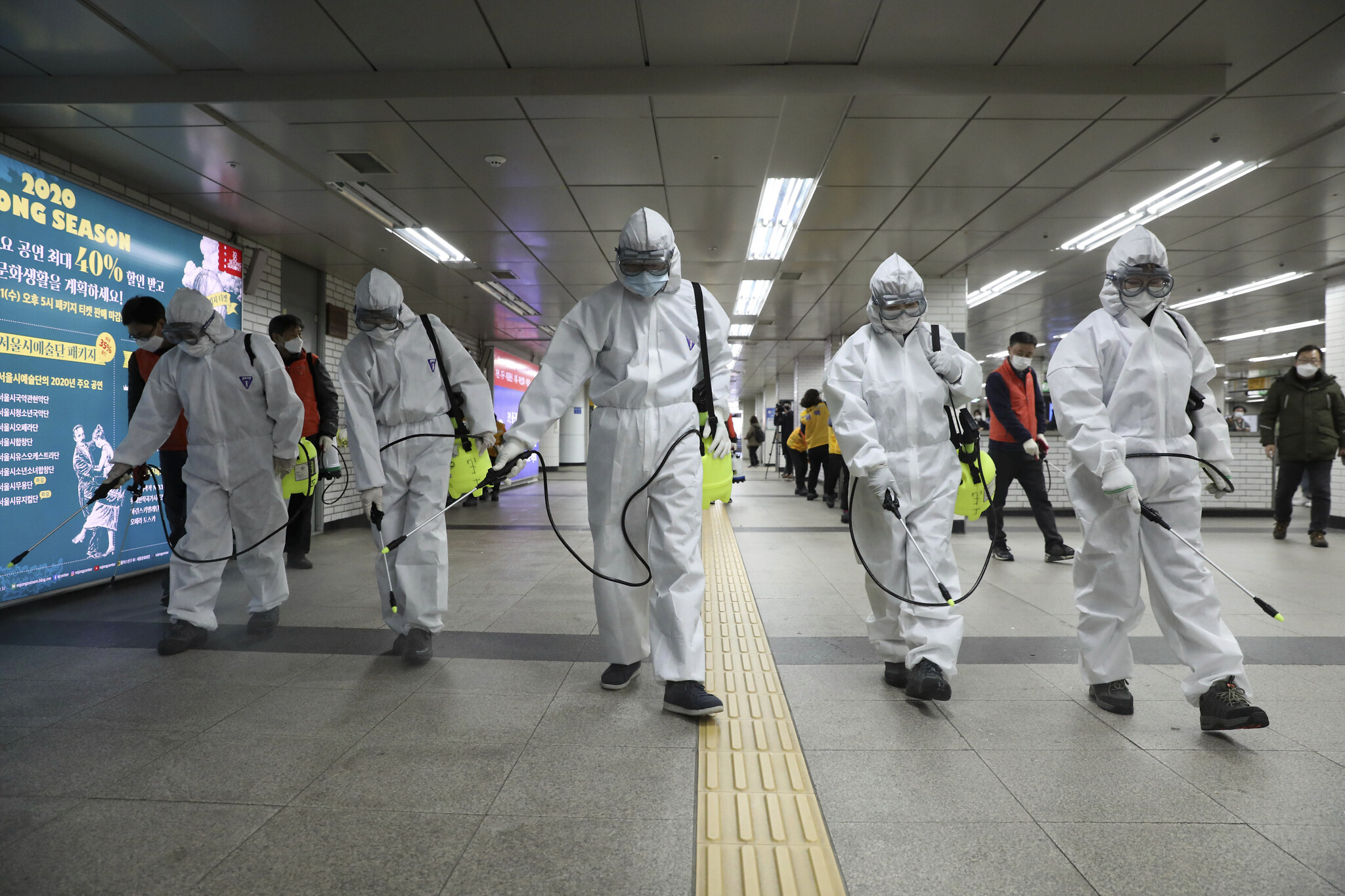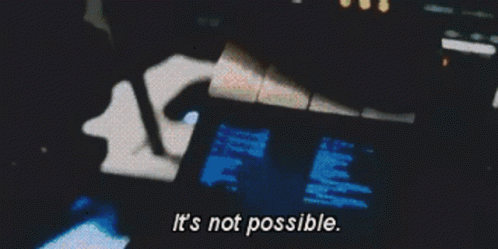change
Change Readiness: Preparing Your Organization For The Storm
August, 2023

change
Change Readiness: Preparing Your Organization For The Storm
August, 2023
Artificial Intelligence and machine learning. COVID-19 and the war in Ukraine. Political polarization and democratic decline.
We are in a new era. One marked by constant, exponential change.
Those that learn to adapt will flourish. Those that refuse the call will be plagued by constant crisis.
Each leader faces a choice – what will you do in the face of change?
We are often called by clients who are in the throes of crisis. They committed to a strategy that led them further and further from their objectives. Much of our work is orchestrating initial change and then teaching leaders to be self-sufficient in change.
Based on our experience, leaders will benefit from understanding:
Riding the waves of change is a developable skill. By training those skills now, leaders will know how to navigate when the storm hits.
There are periods in history that are more stable. Where societal systems, norms, and ways of operating stay in place for long periods of time. There are also periods of history where seemingly massive disruption happens all at once.
Two predictors of massive change are how complex and how interrelated our systems are built.
Complexity is characterized by the number of “parts” inherent in the system. These parts often have multiple, different functions. The more complex a system, the harder it is to model, to predict, to even understand.
Case in point, think of the operations of a bank. A simple retail bank that collects deposits and makes loans has a straight forward business model.
But by the crash of 2008, bad housing loans were bundled, chopped up, and swapped between financial institutions. Add in synthetic derivatives, which enabled institutions to make wagers on the performance of these financial products. The system was overly complex, poorly modeled, completely misunderstood. Complexity makes measuring risk really, really difficult.

Lehman Brothers Goes Bankrupt
Interrelation is characterized by the dependencies of different systems that have been woven together. The greater the interrelation, the more a single level will create multiple, cascading impacts that are difficult to control.
Returning to the 2008 financial crisis, predatory lending practices in the United States greatly expanded the amount of bad housing loans. Financial institutions swapped and made wagers on bundles of these bad loans. Corporations such as General Electric – operating shadow banking arms – took on these financial products. European banks, afraid of missing out on the action, took on 38.8x more risk than U.S. banks! (Europe took on more than $30 TRILLION in exposure making U.S. bankers look almost prudent by comparison.)
When the music stopped and the crash decimated financial markets, the infectious rot was interwoven into almost every facet of the global economy. This wasn’t just “too big to fail”… without intervention the entire system would have collapsed.
Chain reactions in our systems have created great fragility. A mistake in one corner of the world now ripples out and impacts everyone. A virus emerges from China, fighting begins in Donbas, David X. Li uses a Gaussian copula model to price collateralized debt obligations (CDOs).
Statistician Nassim Taleb was one of the rare traders that foresaw the 2008 crisis. Based on his mathematical modeling, he has since coined the term Black Swan events, which are “large-scale unpredictable and irregular events of massive consequence.” He writes:
“Man-made complex systems tend to develop cascades and runaway chains of reactions that decrease, even eliminate, predictability and cause outsized events. So the modern world may be increasing in technological knowledge, but, paradoxically, it is making things a lot more unpredictable.”
The fragile systems we have built are prone to collapse. According to Taleb, we have entered an era where the pace and scale of Black Swan events are set to increase. We can expect more shocks, more crisis, more societal chaos.
We must prepare for change.
“You get pseudo-order when you seek order; you only get a measure of order and control when you embrace randomness.”
- Nasim Taleb
There are different flavors to change.
There are two variables that determine the kind of change we find ourselves within: our degree of control and degree of adaptation.
When we have control, we can choose to initiate change in a planned manner. When change occurs outside of our control, we are responding to an unplanned, outside stimulus.
When we shun adaptation, we demonstrate our loyalty to the current operating principles through incremental change. When we chose to adapt, we consider large-scale often radical reorganization of our systems.

The four types of change:
Developmental change is the epitome incremental change. This is the day-to-day pulling of the weeds. In our article on good leadership, we largely wrote about running a core business with stability and efficiency. Incremental change is good at pruning structures and processes.
Contrast that with an organization that sees the need for transformation. They recognize a need to reorganize and launch change initiatives of their own volition. They may want to upgrade their IT infrastructure, merge with a new company, or launch a major leadership development program.
And now we return to our external shocks, our Black Swan events. When the COVID-19 pandemic raced around the world, governments chose to shut down businesses and quarantine their populations at home. Overnight, employees, customers, suppliers … vanished.

Disinfecting during the COVID-19 pandemic
Businesses had a choice – to ride the storm and wait to get back to normal OR to radically transform their operations.
For some, the choice was incremental. Purchase a Zoom license and wait until all employees can be back in the office. Others took a more radical approach, embracing disruption by massively moving their operations to e-commerce. Other companies embraced permanent work-from-home or found some hybrid equilibrium. A study amongst C-Suite leaders found that digital transformation projects that were estimated to take 2 years were completed in less than a month. On average, technology updates were completed 20x faster than expected.
As crisis becomes the norm, organizations need to learn the art of change. Embracing radical change is possible and, thankfully, it is something that can be trained. Both individual leaders as well as organizational cultures can be taught the skills of change readiness.
“In calm water every ship has a good captain.”
- Grover Cleveland
“A smooth sea never made a skilled sailor.”
- Franklin D. Roosevelt
At its most basic level, an individual must be open to change in order to initiate change. Rigidity – loyalty to a way of doing things – keeps one in a state of repetition. Rigidity is fueled by three components:
Rigidity has been shown to correlate with ethnocentrism, which is in term closely related with feeling of superiority. This can lead to social prejudice such as sexism, racism, xenophobia, etc.
By contrast, leaders who embrace the opposite characteristic – cognitive flexibility – are able to:
Humans undergo a wonderful dance with their environment.
A stimulus occurs, the body uses its sensors to receive the information, the brain filters and makes meaning of the information. The mind creates an interpretation of the external stimuli and triggers a physiological response.
The sun shines and we feel the warmth on our skin, the stock market crashes and we read with our eyes, a lover calls and we hear with our ears. We may feel happy, afraid, loved.
Based on our filtering and interpretation of outside events, our body engages in a chain reaction of neurological and hormonal changes meant to mobilize the body into action. Emotion is our compass to action.
One neuroscientist suggests we are all living within our own “controlled hallucinations”.
Some of our behavior is born of instinct. We hear a crashing noise and protectively flinch. Over time, with repeated stimuli, we form associations and habit loops. Our phone vibrates and, without thought, we instinctively reach for our pocket. We create an automated response pattern.
These mental short-cuts can help us stay alive and save us cognitive resources.
But they can also get us in trouble. Repetitive, unconscious habit loops keep us locked into behavioral strategies even if the environment and stimuli start to change over time. This is particularly troublesome as many of our associations and mental models of the world are formed in childhood. A childhood whose world may be outdated in our era of exponential change.
“The definition of insanity is doing the same thing over and over and expecting different results.”
- Albert Einstein
Intuition is a different process than instinct. Intuition invites us to listen to all the cues and messages of the body. We bring awareness rather than impulsivity. Like a big Board meeting, we allow the senses and emotions of the body to give their messages. From there we calm down and give ourselves the option to act with intention.
Intuition is trained on aware experience. We can take in massive amounts of data without deep analysis. This pattern recognition shows up as a feeling that goes beyond the seemingly rational.
Over the course of our life, our task is to “clean up” our intuition - a process of decoupling our associations from past experiences. Through decoupling, the past does not exert undue influence on the present.
At its best, therapy is a process of decoupling. Meditation is one of the best methods for awareness and decoupling. By bringing awareness to the emotions and thoughts that quietly run the show on autopilot, we have a chance to develop insight into our own operating system.

A rigid individual who is close-minded is consciously or unconsciously making a choice to dim their senses. To disconnect from the outside world and reduce the amount of information input. They often disconnect from their bodies, choosing to ignore or override emotions. Increasingly, one lives entirely in their head – out of touch with the reality of the world and with increasingly deteriorating mental health.
“The significant problems we have cannot be solved at the same level of thinking with which we created them.”
- Albert Einstein
Adults use different techniques to define the “self”. To have a concept that “I am me and I exist and I am good”. This can range from - I AM my wants and desires (and must act on them) to I AM my reputation (and must remain in good standing) to I AM my principles (and work to stay in integrity with myself). At each point, we have a personal identity that reassures us about the order of the world - how things work - and our place in it.
When I AM my desires, I don’t mind breaking the rules to get what I want. I’m in a rush so I jaywalk, cars be damned. When I AM my reputation, I make sure to stay in accordance with my community. I don’t jaywalk because I am afraid to be judged and shamed by others. When I AM my principles, I follow rules because I have a personal value around orderliness. I don’t jaywalk because I don’t want to let myself down.
All of these AM’s create an image of the self – an identity. We all hold many identities – we may be a man, woman, mother, father, engineer, white, Muslim, a veteran, Chinese, bad at drawing, a Manchester United fan, neurodivergent, tall, etc. And with each identity we individually define what it means to be good.
Sometimes we hold tight to those identities. The crazed sports fan flips and burns a car after a big loss. Or starts fights with fans of the opposite teams. In this example, following tribalistic passion is defined as a form of “being a good fan”.

Fans chase players
Being locked into an identity can significantly alter how we behave. We instinctively define “a good dad should be like this”, “a good mom should be like that”. We conform our behavior to the identity. This congruency is very important to our brain.
But this also means we are acting out of a concept. We have a mental image of the world and how it should work and then blindly follow that blueprint. Again, many of these patterns are likely picked up in our formative childhood years.
Quality therapy and meditation are helpful for healthily detaching from our identities. Our passionate sports fan can move from unbridled rage to sadness/disappointment to detachment/neutrality over time.
Healthily detaching from our identities is the highest form of psychological maturity and allows us to be self-transforming (and take the perspective of others) in each and every moment.
“Your whole idea about yourself is borrowed – borrowed from those who have no idea who they are themselves.”
“A man is absolutely free when there is no identity left. You are neither a Christian nor a Hindu nor a Mohammedan; you are neither an Indian nor a Japanese nor a German; you are neither a man nor a woman. You are just a pure consciousness, and that consciousness is eternal.”
- Osho
This combination - operating from a mental projection of how things “should be” and blindly reacting on instinct - sets up a dangerous operating system. (The “controlled hallucination” is now more hallucination than anything else.) One in which we are closed off from environment cues, the information of our senses, and calm bias-free decision making. This operating blindness keeps many from really, really, really OBSERVING the environment. An environment which is always dynamic, always changing.
Inside our climate-controlled house staring at a computer playing at being the know-it-all, we may not observe that year-over-year there are less birds flying, rampant droughts and wildfires, escalating temperatures. That trees are literally migrating up the mountainside. Then one day we are shocked to find out that the planet is in a crisis and it is too late to act.
Changing our behavior requires observing the environment, making sense of what is happening, and determining the best course of action.
If we feel fear, discomfort, laziness - these are mechanisms that keep us locked into our past habits. If we can’t bear to change how we view ourselves and stay nimble with our identities - these mechanisms keep us locked into our past habits.
The human brain loves control and it loves certainty. We are willing to tolerate harsh pain and suffering even for information we already know is useless. Humans choose familiar negative outcomes over something new that has upside. Knowing with certainty something will turn out bad is deemed “better” than the risk of improvement.
The leader who has the courage to adapt does not carry the burdens of the past with them. They stay flexible and are willing to try any strategy without judging themselves. They process their fear of the new and move forward anyways.
All that a leader must do is to humbly ask - what is needed of me in this moment?
This is situational awareness - the ability to respond to our environment. It is our greatest gift and one that we must reclaim. To be what is needed, when it is needed.

Interstellar (2014)
This is the process of change. To be change-ready is to do the “homework” of learning the language of the body, decoupling old experiences from the past, and shedding (or at least reducing) the weight of our identities.
“To improve is to change; to be perfect is to change often.”
- Winston Churchill
Somehow, in Anglo-Saxon society, the disconnected leader has become our role model. Living in delusion, pretending emotions don’t exist, burning down the environment is tough and therefore good.
Leaders should either criticize or at least deprioritize learning “soft skills”. Self-awareness, empathy, intuition is weak and therefore bad.
Caught up in ego defense, many people in positions of power are loyal to a construct that is self-destructive. But it is exactly these “soft skills” that are needed to lead successfully through Black Swan events.
Modern warfare is exceedingly complex and requires mass cooperation across units. To adapt to these new conditions, the United States Army Command conducted a study on increasing the efficacy of combat troops in warfare. Since their 2013 study, they have highly prioritized training their leaders in the skills of adaptability.
Their research found four core competencies to excel in modern combat conditions:
Intuition allows a leader to rely on pattern recognition to make quick decisions. Rather than get bogged down in process, procedure, data – the intuitive leader is comfortable using the information of their body to move to action.
Creative thinking allows a leader to pull in different inputs and come up with out-of-the-box solutions. In any dynamic situation – particularly that is novel – leaders need to rely on creativity. New problems necessitate new solutions.
Self-awareness allows a leader to understand the physicality of their body, their emotional information systems, and the thinking patterns of the mind. With self-awareness come the skill of self-regulation - being the captain of your ship.
Social skills allow a leader to get an accurate read of environmental cues and how they impact others. They can build rapport and cohesion through great communication.
If it’s good enough for the military, it’s good enough for your organization.
“So a military force has no constant formation, water has no constant shape: the ability to gain victory by changing and adapting according to the opponent is called genius.”
- Sun Tzu
For many years, organizations were conceptualized as machines. Pull a lever and you get an output. Figure out what button to press and the outcome is certain. This mental model is severely outdated and an inaccurate way to make sense of how these complex organizations function.
Today, most leadership experts and psychologists liken an organization more as a living organism. The organism is a body that consists of cells, organs, and organ systems. There have different functions but work in conjunction to keep the organism alive and healthy.
In organizational change-readiness, there are three “organ systems”.

The first is the core business. The core business is akin to the machine – it has a known, stable structure. The core business tries to repeat the same process day-in and day-out. The holy grail of the core is efficiency.
The second is innovation. This is not a formal function like research and development. Rather, it is an informal collection of employees who are at the forefront of new thinking and experimentation. Innovation is connected with more eccentric and fringe areas of the outside world.
The third is integration. Again, this is not usually a formal function. Integration is a distributed network of employees who filters the experiments of innovation and ferries them to the core business. They are early adopters and adept at influencing the organization.
In tandem, these social networks - or “organ systems” - work in harmony to allow the body of the organization to function as one. Change must be managed as a social process, not an exercise in ticking boxes.
Current methodologies in change management are ineffective. Popular models such as Kotter’s 8 Step Change Model make intuitive sense, but in practice, achieve little. Once implemented, particularly by management consultants, they boil change down to a series of Excel spreadsheets.
Real human behavior doesn't change via an Excel spreadsheet.
Change management has become glorified project management with a fancy new title slapped on top. This form of change management is not holistic, and it wastes time and resources.
Real organizational change is a social process. It requires a top-down and bottoms-up mass movement. This must take into account people’s emotions. A leader cannot mandate “this is the way it is”. People must be bought-in or change will be tissue rejected and never implemented.
Real organizational change is asynchronous and comes in waves. It leverages the natural social network to spread information and excitement. Natural connectors who are nodes in this social network move innovation across disparate groups. To orchestrate change is to embrace that organizations are more like organisms than machines.
“You do not lead by hitting people over the head – that’s assault, not leadership.”
- Dwight D. Eisenhower
Some things stay the same, some come and go, and others change and withstand the test of time.
An invention is the creation of a new technology. Technology can be something practical we hold in our hands, a concept that changes our thinking, or a social process that changes how we interact. Invention is novelty.
Innovation is a technology that gets embedded into our core processes. Innovation makes its way into organizations or society and has a lasting impact.
In North America there is a current debate on standardizing electric vehicle chargers. One charger, NACS, is developed by Tesla; all the other traditional car manufacturers used the CCS. Both are inventions and are vying for widespread adoption. Whichever becomes the societal standard will be considered the innovation. (It currently seems the automotive industry is unifying around NACS.)

Tesla charging station
This is a similar process that unfolded between Betamax and VHS as well as Blu-ray and HD DVD. And while Blackberry was first to create a touchscreen smartphone, the iPhone is the lasting innovation that we synonymously associate as the iconic smartphone. (In response to the iPhone, BlackBerry CEO said, “We’ll be fine.”)
Similarly, within an organization, innovation is preceded by invention. To do this, organizations can encourage and support employees on the fringe of networks who are entrepreneurial. To bolster their inventive capacity, leaders can create the conditions for innovation by:
Command-and-control hierarchy suffocates creativity and inventiveness. To increase innovation, organizations need to greatly increase delegation and autonomy of employees. By harnessing an individual’s intrinsic motivation to improve the company, leaders encourage new ideas to emerge. Ironically, even the military has moved away from rigid hierarchy as evidenced by the United States Navy SEALs promotion of “decentralized command”.
Experimentation allows employees to bend the contours of their role. They embrace a sense of play, allowing new and different processes to emerge. Through experimentation, employees rearrange and allow improvement to materialize spontaneously without the risk of massive mistakes.
To foster innovation, employees must be allowed and rewarded for taking risk. To do this, they must be allowed to try new strategies detached from the eventual outcome. This will lead to mistakes and failures but more importantly learning and inventiveness. Restricting employees to perfection and overly emphasizing reaching a predetermined outcome will kill innovation.
To be entrepreneurial, employees need to be constantly scanning the environment for new information. In this manner, they are in tune with shifts with the marketplace and with technology. By staying deeply curious across different domains, they do not get stuck in their functional expertise. This necessitates investing time and energy in learning for learning’s sake, away from core responsibilities.
If employees are a carbon copy of one another they will produce identical ideas and identical results. To increase creativity, people need to embrace differences. Diverse groups challenge ideas, challenge the ways things have been done. Diversity is measured both in terms of demographic background as well as in expertise and skills. Diversity drives creativity.
When these five elements are fostered through organizational culture, entrepreneurial people in the system tend to form loose, informal networks to share and test ideas. These groups enjoy trading ideas and fostering a sense of play inevitably leading to inventiveness.
In 2004, Google announced its 20% rule – every employee was encouraged to spend 20% of their time thinking of ways to improve Google. Any employee could take time to start a passion project on the side. This decentralized inventiveness lead to AdSense and Gmail. By allowing for decentralized experimentation and play across informal networks, Google promoted a culture of entrepreneurship.
(Unfortunately, in 2013 Google killed the 20% rule. They also lacked competence in Integration which will be explored in the next section.)
Another example of the innovativeness principles is the video game company, the Valve Corporation. At Valve, there is no hierarchy whatsoever, no project plans or strategic objectives. Complete and total employee autonomy. They are famous for having desks on wheels which allows employees to spontaneously coalesce around new, organic project ideas. Their approach has generated numerous award-winning videos games, hardware, and domination of PC video game distribution.
Innovation is an organic and often spontaneous process. But what separates something new from something transformative is the degree to which it is implemented into the core of the business.
“Innovation is the only way to win.”
- Steve Jobs
Eccentric, creative ideas need to be filtered and shepherded into the core business. The integration “organ system” plays a key role in moving ideas from the periphery into the mainstream. They are also a decentralized network of individuals with loose ties across the organization. Unlike the innovators, they have a more pragmatic lens on innovation. They are skilled at influencing change. They act as the bridge between the old and the new.
To bolster their integrative capacity, leaders can create the conditions embedding innovation by:
To have a change mindset is to embrace that life is always ever-evolving and always changing. Employees that embrace a change mindset are already anticipating and scanning for change. They may not be inventors but they are early adopters. Fostering an attitude that change is a constant helps employees process the emotions that may arise in the face of uncertainty and novelty.
With psychological safety, a person can be themselves without fear of harm or retribution. Psychological safety allows employees to speak freely, brainstorm and engage in creativity without being belittled or criticized. Psychological safety allows a diverse group to form cohesion and respect each other’s differences. A study commissioned by Google found that psychological safety is critical for high-performing teams. By cultivating this attribute, innovations can be healthily challenged and moved closer to the core of the business.
Employees that operate as integrators sit between the experimental innovators and the often-conservative core of the business. They must manage tensions from both sides. On their left are people hungry for constant change; on their right are people practically operating the day-to-day. The integrators must know how to influence both parties and negotiate tensions in emotions. To do this, they benefit from excellent communication and influencing skills.
Finally, the integrators are willing to try the new technology themselves. They are early adopters and want to play with new solutions. They form the vanguard of excitement when a new technology is worth embracing. Under this is a belief system that new technology is easy to use and easy to incorporate into their roles.
In combination these attributes help to move innovation into the core business and create a tipping point for broad-based, social change.
Google is notoriously awful when it comes to moving innovation to implementation. As of the time of writing, Google has killed 288 services. From Google Play to Google+ to Google Glass, the companies at times arbitrary decisions to kill inventions has left customers uneasy about adopting their new technologies.
In contrast, Amazon is one of the most successful companies at nurturing innovation and integrating it into their core business. While they have kept their core retail business humming, they have expanded into cloud services with Amazon Web Services now compromising 50% of business revenue. They purchased Whole Food Markets and leveraged the distribution network to increase the core retail business.
Amazon allows innovation to steadily grow and mature on the side and then finds ways to weave it into its other functions. They have mastered integrating and finding synergies across business units. Eventually their core e-commerce business changes as well, folding in innovation in a seamless, long-lasting manner.
“Ideas are easy. Implementation is hard.”
- Guy Kawasaki
The core business is focused on efficiency, running day-to-day operations. For integration to succeed, the employees must also be open to change.
Often innovation is viewed as a threat to one’s status and power. As a new function or business unit rises, leaders with large egos know they won’t be the main star of the show anymore. Disrupting the business model means disrupting how people see themselves within the organization.
Leadership development helps to increase self-awareness, to foster a change mindset, to healthily shed big egos. As previously discussed, a change-ready leader humbly asks - what is needed of me in this moment? What may be needed is quietly stepping aside so something new can take its rightful place.
In combination, these three “organ systems” keep the organization alive. Constantly in a state of self-induced change. And when the crisis hits, when the external environment rapidly changes, your organization will evolve and emerge a leader in the new world order.
“Change is the only constant.”
- Heraclitus
Massive change and crisis will increasingly transform our society. The shocks will be unpredictable and novel. Now more than ever leaders and organizations must embrace the art of adaptability.
To train change-readiness is to prepare for an uncertain future. We are called to break out of old paradigms and respectfully stop the past from playing an oversized role in decision-making. We are called to develop the courage to open up our senses and take in the world for what it is… not what we think it should be. We are called to embrace the “soft skills” that enable us to flourish in chaos.
This is a learning. And it is also a remembering. For these skills are inherent to who we are as humans.
Reading about change and implementing its lessons are not the same.
Looking for support? Tell us about your team!

